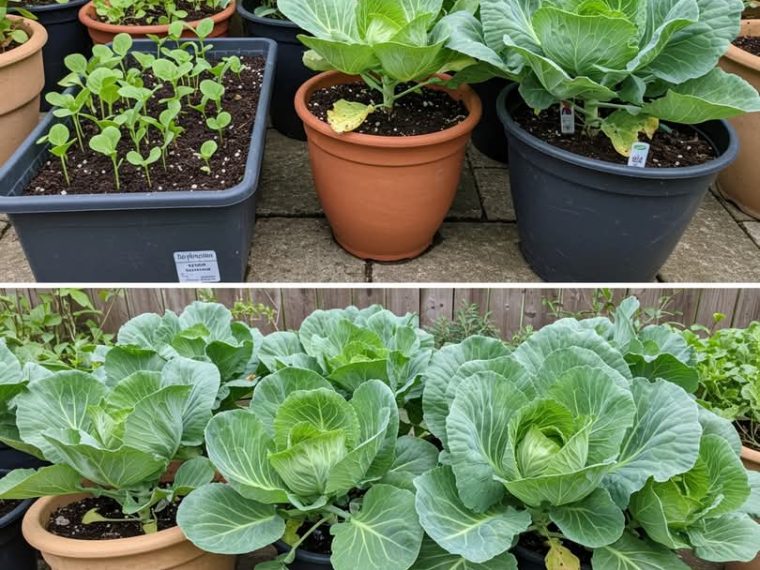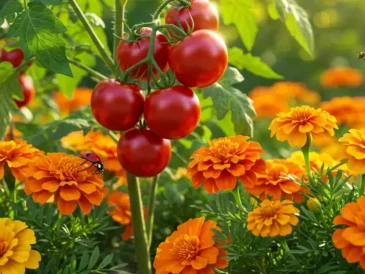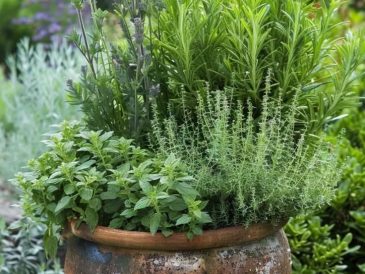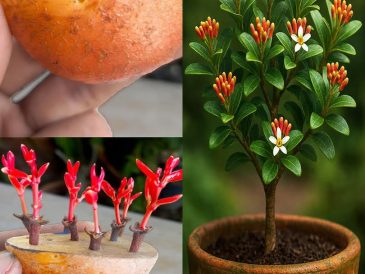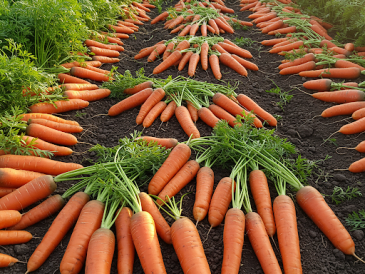How to Grow Pointed Head Cabbage from Seed in Containers | Step-by-Step Guide
Growing cabbage in containers is an excellent way to enjoy fresh, homegrown vegetables, especially if you’re limited on space. Pointed head cabbage, with its conical shape and tender leaves, is a great choice for container gardening. This variety is known for its mild flavor and crunchy texture, making it perfect for salads, stir-fries, or coleslaw. Whether you’re a seasoned gardener or a beginner, this step-by-step guide will walk you through how to grow pointed head cabbage from seed in containers, ensuring a healthy and productive crop.
Why Grow Pointed Head Cabbage in Containers?
Growing cabbage in containers offers several benefits:
Space-saving: Perfect for balconies, patios, or small garden spaces.
Control over soil: Containers allow you to control the soil quality, ensuring a better growing environment.
Mobility: You can easily move containers to follow the sun or protect plants from extreme weather conditions.
Pointed head cabbage, in particular, thrives in containers because of its compact growth habit. This makes it ideal for container gardening where space is at a premium.
Materials You’ll Need
Before you start planting, gather the following materials:
Pointed head cabbage seeds (varieties like ‘Trevor’ or ‘Tadorna’ are great options)
Large container (at least 12 inches deep and 12 inches wide)
Well-draining potting mix (rich in organic matter)
Compost (optional for extra nutrients)
Watering can or spray bottle
Fertilizer (optional, but beneficial for healthy growth)
Plant support (optional, in case the cabbage grows large)
Step 1: Choose the Right Container
Start by choosing a container that is large enough to accommodate the cabbage’s root system. The container should be at least 12 inches deep and 12 inches wide to allow enough space for the cabbage to grow and develop a strong root system. Cabbages have deep roots, and providing ample space will help them thrive.
Make sure the container has drainage holes to prevent water from pooling at the bottom, which can lead to root rot. If you’re using a plastic or ceramic pot without drainage holes, drill a few small holes at the bottom for proper drainage.
Step 2: Prepare the Soil
Cabbages thrive in loamy, well-draining soil that is rich in organic matter. You can use a high-quality potting mix specifically designed for vegetables or create your own by mixing equal parts of compost, garden soil, and perlite or sand for improved drainage.
Fill the container with soil, leaving about an inch from the top to prevent water from spilling over during watering. Ensure the soil is evenly distributed and firm it gently to remove any air pockets.
Step 3: Plant the Seeds
Planting cabbage seeds is straightforward, but the timing and depth are crucial for successful germination:
Sow the seeds about 1/4 inch deep. Cabbage seeds are relatively small, so don’t bury them too deeply.
Space the seeds about 2–3 inches apart if you’re planting multiple seeds in the same container. Once the seedlings are large enough, you can thin them out to allow for proper growth.
If you prefer, you can start the seeds indoors in small pots or seed trays about 6–8 weeks before the last expected frost date. Once the seedlings have grown strong and have at least two sets of leaves, you can transplant them into your larger container.
Step 4: Water the Seeds
After planting the seeds, gently water the soil using a watering can or spray bottle to moisten the surface. Keep the soil consistently moist but not soggy. Cabbage seeds need moisture to germinate, but too much water can lead to rot.
Water the seeds daily or as needed, especially if the weather is warm. If you’re growing the cabbage outdoors, consider using a drip irrigation system to provide consistent moisture without disturbing the soil surface.
Step 5: Thin the Seedlings
Once the seedlings have emerged and grown to about 2–3 inches tall, thin them out to allow each plant enough space to grow. Pointed head cabbage plants should be spaced about 10–12 inches apart in the container to allow for optimal growth.
When thinning, remove the weaker seedlings by cutting them at the soil level with a pair of scissors. This ensures that the remaining plants have enough room to develop their heads fully.
Step 6: Provide Proper Sunlight
Cabbages need full sun to grow properly. Place your container in a spot that receives at least 6 hours of direct sunlight per day. If you’re growing cabbage indoors, place the container near a south-facing window, or use grow lights to supplement natural light.
If growing outdoors, ensure the container is in a sunny area where the plants are shielded from strong winds, as cabbage heads can become damaged if blown around excessively.
Step 7: Fertilize the Plants
Pointed head cabbage benefits from regular feeding to support healthy growth. Apply a balanced, slow-release fertilizer every 3–4 weeks throughout the growing season. A fertilizer with a ratio like 10-10-10 (NPK) is ideal for cabbage, as it provides balanced nutrients to promote leafy growth and strong heads.
If you prefer organic gardening, use compost or organic fertilizers such as fish emulsion or seaweed extract. Apply the fertilizer according to the instructions on the label, ensuring you don’t over-fertilize, as this can lead to excessive leaf growth at the expense of the head.
Step 8: Harvesting the Cabbage
Pointed head cabbage is typically ready for harvest in about 60–75 days, depending on the variety and growing conditions. The cabbage heads will feel firm to the touch when they’re ready to be picked. Gently pull or cut the head from the plant when it reaches the desired size.
To harvest, use a sharp knife or pruning shears to cut the cabbage just below the head, leaving the roots in the soil. This will allow you to harvest individual heads as they mature, and the plant may continue to produce smaller secondary heads.
Final Thoughts
Growing pointed head cabbage in containers is a fun and rewarding way to enjoy fresh, crisp cabbage at home. With the right container, soil, and care, you can successfully grow this versatile vegetable even in small spaces. Whether you’re an experienced gardener or just starting out, this easy-to-follow guide will help you grow healthy and delicious pointed head cabbage from seed in containers.

